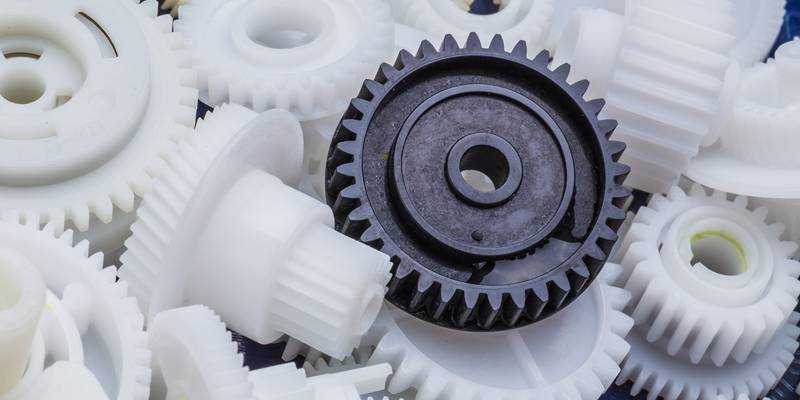- September 2, 2022
Nylon vs Delrin has been a rife comparison when it comes to machining projects and injection molding. Besides, nylon (polyamide) and Delrin (an acetal homopolymer) offer amazing properties like strength and long-lasting resistance to wear. Both are UV light and chemical resistant, with a small friction coefficient.
But then, you have to choose a material that best suits your project requirements with its properties. That’s why in this article, we have provided a clear Delrin nylon comparison, examining their properties, differences, advantages, and disadvantages.
What is Nylon?
Nylon is a synthetic material obtained from polyamide and is part of the condensation polymer group because of its synthesizing technique. Thus, the production method is polymerization by condensation, and the monomers used are dicarboxylic acids and diamines.
By all standards, nylon is a sturdy material and also has trusted chemical and heat resistance. But the function declines and becomes unstable whenever it absorbs moisture from the environment. Thankfully, these letdowns can be prevented by subjecting it to preconditioning treatments.
What is Delrin?
Delrin is an acetal polymer also known as Polyoxymethylene (POM). It is a very important material that comes in handy in manufacturing processes like delrin machining and injection molding. Thanks to its desirable properties, it has been one of the mainstay materials in the manufacturing industry.
The polymer contains a high crystalline composition, making it mostly opaque and white in color. Thus, ever since the first manufacturers used it in 1960, many others have largely produced it in various colors. Due to its structural integrity, reduced friction, and improved stiffness, Delrin is very useful in producing precision parts.
Nylon vs Delrin Properties
Delrin and nylon are important materials for manufacturing precision items because they possess high-quality properties. Let’s see some of the properties of nylon and Delrin.
Nylon Properties
Here are the outstanding nylon properties that make it a go-to for most manufacturers.
- Resistant to chemicals
- High melting temperature point
- Increased tensile strength
- Low coefficient of friction
- High wear and tear resistance
- Good machinability
Delrin Properties
Some stunning Delrin properties that place it at the top of the list for every manufacturer include:
- Reduced absorption of moisture
- Increased resistance to fatigue
- High tensile strength and rigidity
- Chemical and solvent resistant
- Good dimensional stability
- Highly resistant to abrasion and wear
- Low-temperature stability
- Massively resistant to impact
- Excellent machinability
What is the Difference Between Nylon and Delrin?
There are certain peculiarities to note when talking about nylon and Delrin, even with the shared characteristics. We will cover them in this part.
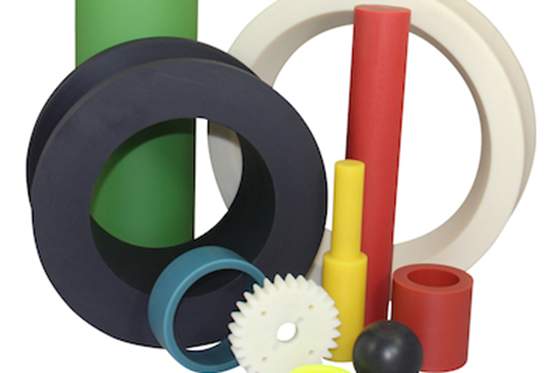
The Friction
In comparison to other plastics, Delrin and Nylon have low contact resistance. There are no significant variables with contact between Nylon and Delrin. They can both be used to produce moving and sliding elements that require little to no maintenance.
Tensile Strength
Its tensile strength defines the maximal stress levels which can irreversibly deform a material. When it comes to Delrin’s 10,000 psi tensile strength, nylon has an increased tensile strength of 12,000 psi.
Machinability
While Delrin is widely regarded as the most machinable material, nylon is commonly considered easily machinable. Free-cutting in plastic machining, Delrin has excellent dimensional durability and is a very simple material to process.
As a result, obtaining accurate and precise specifications is made much simpler. It is ideal for the production of various medical devices as well as engineering and industrial parts, electrical components, and other elements.
Wear Resistance
In dry settings, nylon typically has more surface roughness than Delrin. Delrin without fillers has slightly poorer wear resistance than nylon. As a result, it shows a decreased wear rate at a constant condition, particularly when under tension.
3D Printing Capability of Each Technique
The key difference between Delrin and nylon is their 3D printing capabilities. Various methods, such as FDM, selective Laser Steering, and MultiJet Fusion, work great to 3D print nylon.
Compared to Nylon, the majority of Delrin materials require extra work when being 3D printed. Elevated components like bearings and gears are used in most applications in this instance.
Moisture Resistance
The common plastic Nylon can absorb up to 8% of moisture. Delrin may absorb only about 0.2% of moisture in identical circumstances. It’s crucial to remember that full nylon absorbs less moisture than unfilled variants.
Temperature Tolerance
Delrin generally works at temperatures between 180 and 190 degrees Fahrenheit. This is between 20 and 30 degrees colder than the nylon 6,6 norm. As a result, nylon is more temperature-tolerant than Delrin.
Delrin vs. Nylon: Head-to-Head Comparison in Chart
| Material Properties | Delrin | Nylon |
| Friction coefficient | Low friction coefficient | Low friction coefficient |
| Moisture Resistance | Higher moisture resistance | Moderately resistant to moisture |
| Tensile Strength | 10,000 psi tensile strength | 12,000 psi tensile strength |
| Machinability | Highly machinable | Good Machinability |
| Wear Resistance | Good | Excellent |
| 3D Printing Capability | Challenging | Easy 3D printable |
| Temperature Tolerance | Medium temperature tolerance | Higher temperature tolerance |
Nylon vs Delrin: Advantages and Disadvantages
As the two most sought-after properties in the manufacturing market, nylon and Delrin surely have different merits. Below we highlight some advantages as well as disadvantages of nylon and Delrin.
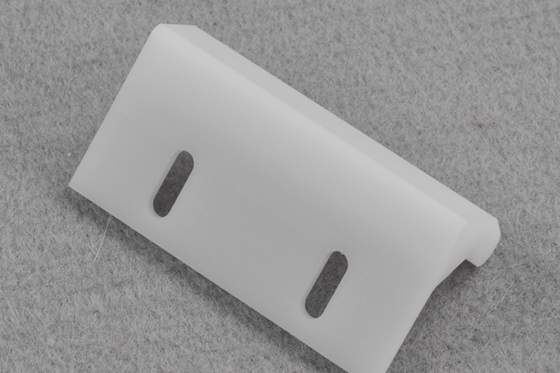
Delrin Advantages and Disadvantages
Advantages of Delrin
Delrin has several advantages due to its mechanical properties. Below are the advantages.
1. Lightweight
Compared to other materials, Delrin is one of the lightest. However, do not confuse it with weakness, as it also has high tensile strength. Thus, it can tolerate frequent shock loads as well as heavy impact.
2. High Tensile Strength
Delrin is highly resistant to fatigue due to its increased mechanical strength and stiffness as a polymer. It is useful in producing high-performance items that require strong material with extended lifecycles.
3. Good Machinability
The special properties of Delrin make it easy to use during the production process – whether it is a traditional or highly advanced process. Its higher flow rates which enable more consistent thin mold wall filing, place it above other materials.
4. Great Capacity for Stress and Strain
Compared to metals, Delrin has a very impressive stress capacity, making it easy for it to spring back when impacted. It also has a good strain capacity making it ideal for snap-fit and buckle applications.
5. Resistance to Moisture
Delrin does not absorb moisture at all, making it a suitable material option for items used in humid conditions. Furthermore, it cannot rust because it is resistant to chemicals and organic solvents, making it perfect for several production processes.
Disadvantages of Delrin
The demerits of delrin include:
1. Non-Resistance to Abrasion
The material Delrin cannot withstand heavy abrasion, which makes it unsuitable for some items used in construction industries.
2. Low-Temperature Tolerance
Delrin is unsuitable for high-temperature production processes due to its low-temperature tolerance.
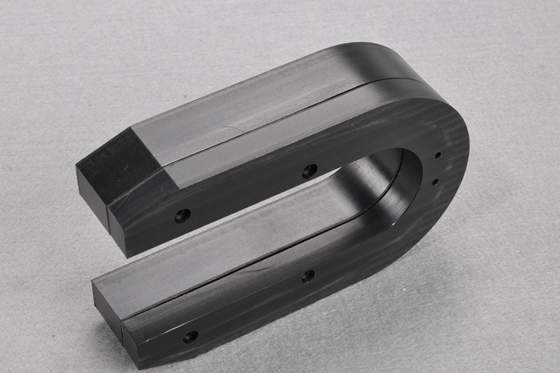
Nylon Advantages and Disadvantages
Nylon has many grades of molded parts, giving you different properties, advantages, and disadvantages. Let’s look at the advantages and disadvantages of nylon material.
Nylon Advantages
1. Durability and Strength
One of the reasons why nylon is desirable is its dogged strength and great durability. The massive tensile strength helps to give it lasting endurance in adverse usage conditions. These features make it suitable for various production processes and applications.
2. Easily Fabricated
The nylon material dries fast when subjected to dyeing or any form of color change. Thus, you can produce it in any color of your choice easily. It is also suitable for precision part production due to this feature.
3. 3D Printability
You can use nylon in 3D Printing as it presents no limitations to complex shapes. It also gives you the freedom for any design and flexibility to introduce geometries.
Nylon Disadvantages
Here are the major downsides of the nylon material.
1. Poor Machinability
Compared to other high-performance materials, nylon does not have good machinability. While it can still come in as a machinable material, there are other better options.
2. Low Moisture Resistance
Nylon has moderate moisture resistance, but the function declines, and it becomes unstable whenever it absorbs moisture from the environment.
Applications of Nylon vs Delrin
The use of nylon or Delrin by producers around the globe is motivated by a variety of factors. Due to their relative benefits, various production methods may favor one material over another. Some uses for both nylon and Delrin are listed further down.
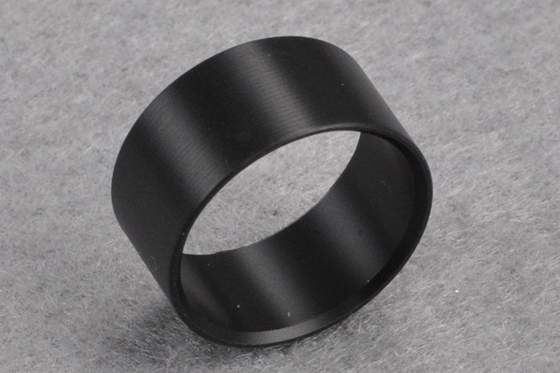
Delrin Applications
Delrin’s many amazing characteristics make it a preferred material among manufacturers and designers in many operations. Well-known enterprises use Delrin components all around the world to make a variety of equipment, such as:
- Auto parts include; Window and windshield wiper gears, grill parts, seat belt hardware, etc.
- Industrial machinery, such as; Farm equipment, engine components, bearings, and gears.
- Medical supplies, such as delivery systems.
- Products for everyday use include zippers, handles, valves, and parts of door systems.
- Switches, appliance casing, cartridge frames, circuit holders, and other electrical parts.
Nylon Applications
Nylon has a wide range of beneficial qualities that make it helpful in various applications. This information can be found in various sectors, including construction, agriculture, automotive, sports, and food production. Products made from nylon include the following.
- Plastic hardware
- Auto components
- Kitchenwares
- Screws
- Blades
- Gears
Delrin vs. Nylon: Which One is the Best?
After thoroughly examining the two materials, nylon and delrin, the fact remains that the best is the one most suited to your needs. With both possessing amazing properties which make them suitable for diverse applications, you’d rarely go wrong with a choice.
Delrin gives you great dimensional stability with better impact, chemical resistance, and creep. This makes it the ideal take for applications that require low moisture absorption and products for wet areas.
Nylon is better suited for high-temperature applications, and highly abrasive areas. This abrasive-resistant feature makes it suitable for printing parts such as interlocking gears. Besides, Nylon does not wear easily, even under pressure. This wear resistance could be attributed to the tensile strength of both materials, as Nylon has a tensile strength of 12,000 psi as against Delrin’s 10,000psi.
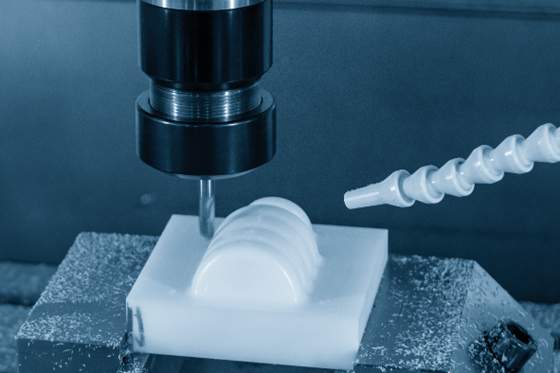
Although Delrin has a good temperature tolerance, Nylon’s tolerance to temperature is better. This makes Nylon the ideal material for procedures that use higher temperatures.
Also, the flexibility and durability of nylon make it absolutely perfect for the fused deposition modeling (FDM) process. This process involves repeated flexing on the material, which may lead to wear if it’s not flexible or durable.
However, Delrin trumps Nylon in machinability, as it is a free-cutting polymer with top-drawer dimensional stability. The stability of Delrin makes it easy for manufacturers to achieve machining accuracy. Also makes this polymer ideal for producing mechanical, electrical, and industrial parts.
Conclusion
With this detailed comparison, you must have accessed your requirements and decided between nylon and Delrin. With this detailed comparison, you must have accessed your requirements and decided between nylon and Delrin. Both materials spot the best properties and will be good materials in their areas of strength. These areas we have highlighted above and discussed some of their disadvantages. but keep in mind that the best material is the one that best suits your needs.
As we know, A quality project all starts with choosing the right materials and processes. With excellent machining capability and an experienced technical team, WayKen will clear any uncertainties and help your selection process. From choosing materials to producing parts, we are committed to meeting any of your needs to a high standard. You can reach out to us and we’ll give you an instant quote and DFM feedback within the next 12 business hours.
FAQs
How Can You Tell Nylon from Delrin?
Nylon can take various 3D forms and desirable colors due to its high color absorption ability. But Delrin has a characteristic opaque color.
What Is Stronger Nylon or Delrin?
Nylon has a higher tensile strength than Delrin, but both are very strong, durable, and suitable for most high production processes.
Can Nylon and Delrin be 3D printed?
Nylon and Delrin can be 3D printable, although nylon performs best for this manufacturing process.

